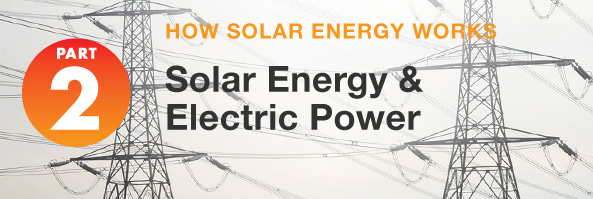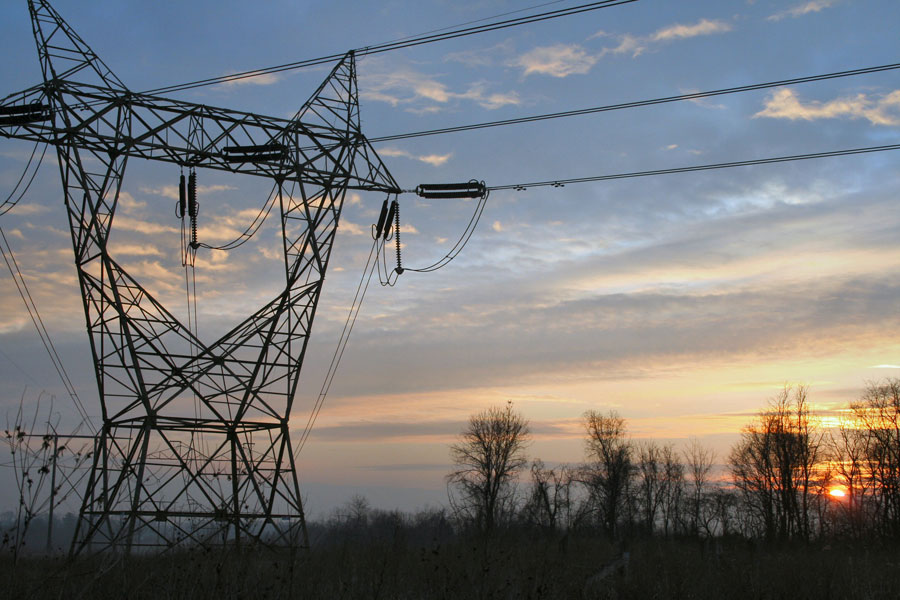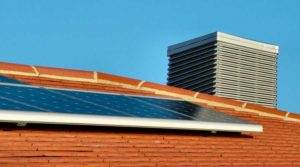Solar Energy and Electric Power

What is electricity?
Electricity is a general term that refers to the presence and flow of electrical power or charge. We get electrical power by converting the energy in primary sources such as solar energy, coal and flowing water into electricity.
How does electricity get to where I live?
Electricity is generated at a power plant. From there it goes to a substation by way of large, high-voltage power lines or transmission lines. From the substation, electricity moves through a distribution system of smaller, lower-voltage distribution lines and transformers to homes, apartments, businesses and factories.

In the U.S., the network of high voltage power lines stretches nearly 160,000 miles across the country and is known as “the grid.” The nation’s grid gets its name from the many local electrical networks, such as the Tennessee Valley Authority and Georgia Power, which connect together forming a web, or a grid, across the United States.
How does solar energy become electricity?
Turning the sun’s energy into electricity can be done two ways: mechanically (using heat, a concentrated solar thermal system) or electromagnetically (using light, a solar panel).
What is a concentrated solar thermal system?
Because the sun’s energy spreads when it reaches earth, it must be concentrated to create temperatures high enough to generate electricity. Concentrating the sun’s energy requires systems that use mirrors or other reflective surfaces that can focus the power of the sun.

These solar thermal systems can concentrate the sun’s energy up to 5,000 times its normal intensity to heat water to produce steam. The steam is used to run an electromagnetic turbine. Much like other types of power plants that burn wood, oil, coal and natural gas to create steam that runs a turbine and creates electricity, a solar thermal system can create electricity, too.
The best solar thermal systems can turn 30 percent of the solar energy that hits their reflective surfaces into electricity.
What is a photovoltaic solar panel?

The technical name for a solar panel is a photovoltaic module. The term photovoltaic comes from two sources – photo (meaning light) and volt (meaning a measurement of electricity). A photovoltaic module is a solid-state electrical device that converts the energy of light directly into electricity using the photovoltaic effect.
How does a solar panel work?
A solar panel – or photovoltaic module – works in three steps:
- Photons in sunlight hit the solar panel and are absorbed by semiconducting materials, such as silicon.
- Electrons (negatively charged) are knocked loose from atoms of silicon in the panel, causing an electric current to flow through the material. Due to the special way solar panels are constructed, the loose electrons are only allowed to move in a single direction. This is direct-current electricity.
- An inverter box turns the DC electricity created by the solar panels into an alternating current–or AC–supply. DC electricity supplies are similar to batteries but since all the appliances in our homes and businesses run on AC electricity, the power supply must be converted.
For a more in-depth look at how solar panels work, take a look at this video provided by the University of Tennessee Living Light:
Can solar panels make electricity for my house?
Yes! Solar panels may be installed on your home’s roof to provide electricity and help reduce your monthly electric bill. The number of panels installed will determine how much your bills are reduced.
How much electricity can a photovoltaic module (solar panel) make?
The more electricity needed, the more photovoltaic modules are needed. When a number of photovoltaic cells are electrically connected together and mounted in a box, it is called a photovoltaic (solar) panel. When many panels are wired together to create more power, that’s called a solar array.
The amount of electricity produced from a solar array can range from as little as 1 kilowatt to upwards of 60 megawatts or more, it all depends on how many solar panels are connected.
The amount of energy produced by a solar array depends on how much sunlight is available. The average solar array turns about 15 to 25 percent of the solar energy that hits its surface into electricity, but on a cloudy or foggy day that efficiency can go down to 10 percent.
What are solar cells made of?
Solar cells are made of a semiconductor wafer, usually made from silicon. The wafer is specially treated to form an electric field, with a positive charge on one side and a negative charge on the other.
Important things to know about installing solar panels on your house

- Space: Most solar panels are installed on roofs. The amount of space available will determine how many panels can be installed. More panels equal more electricity and a lower electric bill.
- South: Solar arrays (a row of solar panels) are more efficient when they face south.
- No Shade: Traditional solar arrays need to be in full view of the sun year around. If even a small portion of an array is in the shade, this can cause a significant reduction in the amount of energy produced. However, new technologies such as thin film solar collectors are designed to work in low light, but aren’t yet widely available and may be expensive.
- Angle: Installing a solar array at a 20-40 degree pitch maximizes the number of hours of sun that a solar array receives each day.
- Tracking: Solar panels that move to track the sun’s angle can help increase production of electricity, compared to those that do not move.

